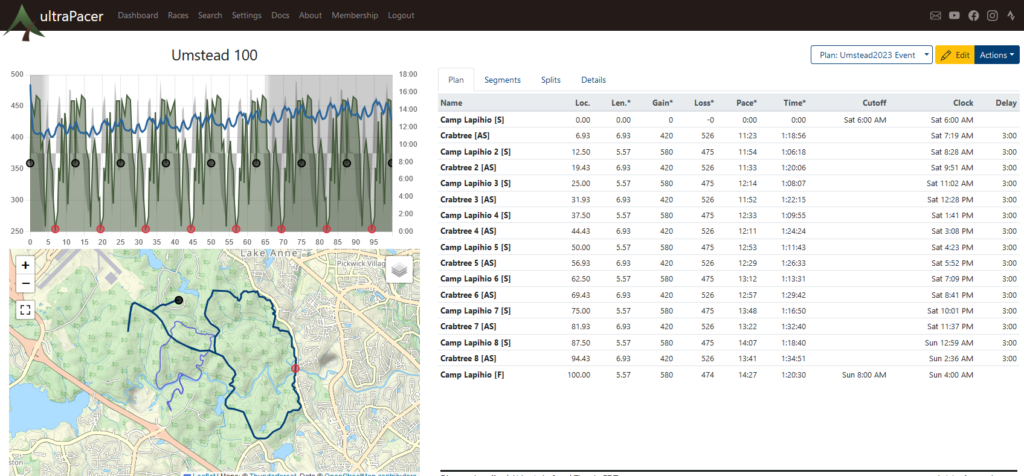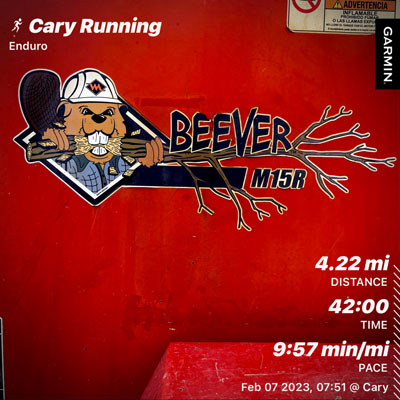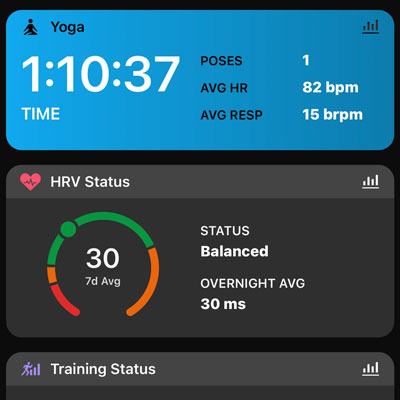Journey to 100: Week 19/26
This is part of a series of posts regarding how I am preparing, planning, and training to complete the 100 miles Ultramarathon Umstead 100: Journey to 100. For all the ultrarunning series, here is Journey to 100 last week’s post, and for additional ideas, follow the link. Training for a 100.
This week is, in a nutshell, a lower mileage week after the plan adjustments in preparation for the next big mileage week coming this weekend. This is where we need to start thinking about Race/Event pacing in relation to your target goals.
Pace planning in relation to your event goals is a very important aspect of successfully participating in an ultramarathon, especially for a 100 miles ultramarathon. This planning is going to help to increase the chances that you are able to complete the event within a reasonable time frame and minimize the risk of injury or burnout. Here are some additional benefits of pace planning.
Improved relative performance: By having a pace plan, you will have a clear idea of how fast or slow you will need to run the different segments/blocks of the race. Pacing yourself appropriately so that you are able to maintain a consistent, sustainable effort that is desirable throughout the event.
Reduced risk of injury while having better energy management: Running at consistent efforts minimizes the risk of injury, as you are less likely to overwork certain muscle groups or put undue strain on your joints. By consistency, I mean not running at an effort that requires you to spend too much energy while then slowing down way slow to try then to catch up by running fast again. It is better to have the relative effort gap to a minimum.
Doing once again a planned effort will help you to conserve your energy by allowing you to run at a steady, sustainable pace for longer. This helps you to avoid the temptation to start too fast, which can result in exhaustion later on. This is something that, in hindsight, happened to me during last year’s event during the first couple of loops.
Mental toughness: By having a plan in place, you are able to focus your mind on the task at hand and avoid distractions or negative thoughts, especially during rough times. This will help you to keep your thoughts positive, highly motivated, and focused throughout the event. Also, giving you the mental bandwidth to then, root cause any issues that need attention instead of worrying about doing too much running math.
Overall, planning is an important aspect of ultra running, as it helps to ensure that you are able to complete the event safely, efficiently, and to the best of your ability, and part of that planning is effort/pace planning.
Assessment:
Think about those back-to-back runs. The runs on tired legs and that were in condition or routes similar to what your event is going to be like. Do you remember the paces and the effort? Was it sustainable? if you plug those paces and efforts, how do they compare to the overall pace and the paces you will need to sustain to meet your A, B, and C goals
Planning:
Plan your efforts ahead of the upcoming training runs—either in a spreadsheet, digital file or even on a piece of paper.

If using paper, you can use the following steps to help you think about the plan,
-Divide the 100 miles into blocks (1 mile, 2 miles, 5 miles, 10 miles, one loop, aid station to aid station/checkpoint) depending on the event that you are tackling.
-Add the paces (effort) that you believe will be sustainable. It is crucial that you do not dream at this stage. Be as realistic as you can. Optimism is good but errs on the side of cautious effort. You also might need to consider reducing the pace per block as you progress during the event.
-Calculate the time for that block.
– Add the dead time for the aid stations to the relevant block.
-Add the time from all the blocks and how those compare to your goals. Make only minor adjustments, especially in those areas that you control the most. Like the time at aid stations.
-Add comments to the side of each block that will help you visualize the event as it evolves in your mental game. Add comments for those adjustments and be conscious of what you are giving up or what you are going to do to become efficient.
-Step back and reconsider additional tweaking.
These last two sequences of steps might also help you with mental toughness and resilience. Go back to adding effort and pace to the blocks and repeat the process like you are having a horrible day. Similarly, what a perfect day will look like. In the end, you should end up with three scenarios that will help you start visualizing your event.

If going digital, there are plenty of tools out there you could use, but I just recently came across the following website that another friend and Ultramarathoner, Adrian Cooper, uses and recommended, ultraPacer. Here is also a video of him using the tool while he is planning for Umstead100, which he will be tackling with our InsaneRunning runners.
ultraPacer is a running tool designed to help plan your running pace, distance, and overall event performance. Here are some of the things that you can do with UltraPacer:
- Set your running pace/goal: UltraPacer allows you to set your desired running pace, which is the speed at which you want to run. But also will automatically adjust, making it easy to prepare a realistic plan and strategize pace splits for your upcoming ultramarathon
- Set goals and track progress: You can set specific goals for your running, such as increasing or reducing your goal time. The tool will help you adjust the plan over time and see possible areas where you might manually adjust.
- Analyze your data: The tool provides you with detailed data, views, and analysis of planned performance, including your pace, speed, and distance, time over time. While also helping you with determining when you should expect to arrive at an aid station or landmarks along your course so your crew knows when to expect you.
Overall, ultraPacer is designed to help you take your planning to the next level by providing you with the information you need to improve your performance and reach your goals.

How is the plan going:
This week was kind of a recovery week, with very short, long runs, compared to the last few weeks. That is in preparation for next week’s heavy mileage. solid week. The workweek mileage was decent; here are some highlights,
Monday: One easy mile followed by some strength training workout at the gym
Tuesday: Easy 4 miles
Wednesday: Morning stretches with some additional Yoga. Afternoon InsaneRunning group run.
Thursday: Another easy 4 miles.
Friday: One easy mile followed by some strength training workout at the gym.
Saturday: Easy 7-mile warm-up followed by an even easier 8-mile event. Ghost Road Trail Run.

Sunday: For today’s run, the weather was almost nonstop rain during the run. Very light rain for most of it, with a few miles of heavier rain. I decided to start a little bit later than usual and focus on sleep and recovery in the morning. Also, I headed out thinking to do something in the realm of 8-10 miles, given the weather conditions. I was feeling so great that at the 5-mile split, I took a mental inventory of the fuel that I was carrying and decided to continue to do at least 20 miles. Ended up doing 22 enjoyable wet miles.
This week’s actual numbers:
| Week 19 | Mon | Tue | Wed | Thur | Fri | Sat | Sun | Total |
| Plan | Stretches & Rolling | 5 | 3 | Rest | 10 | 16 | 26 | 60 |
| Actual | 1 Mile Gym | 4 | Yoga 6 | 4 | 1 Mile Gym | 15 | 22 | 53 |
Next Week Plan: Sunday run will be an early morning 13-miles in dark conditions to simulate trail running during nighttime conditions
| Week 20 | Mon | Tue | Wed | Thur | Fri | Sat | Sun | Total |
| Plan | Stretches & Rolling | 5 | 5 | 3 | 12 | 20 | 30 | 75 |












